The archaeological mission operating in the area of the Temple of Taposiris Magna, west of Alexandria ,Egypt, led by Professor Kathleen Martinez of Universidad Nacional Pedro Henriquez Ureña, in collaboration with Robert Ballard, founder and executive director of the Ocean Exploration Trust, has announced the discovery of submerged artifacts in the Mediterranean Sea, indicating the presence of an ancient harbor connected directly to the temple and the sea.
The results of the geological and archaeological investigations, conducted in collaboration between the mission, Robert Ballard and Larry Mayer, director of the Center for Coastal and Ocean Mapping at the University of New Hampshire, with the cooperation of the Egyptian Navy’s Office of Maritime Measures and the Directorate General of Antiquities Submerged of the Supreme Council of Antiquities, revealed that the site included an inner harbor protected by coral reefs, along with numerous stone and metal moorings of varying sizes and a large number of amphorae dating back to Ptolemaic times. The data indicate that the ancient coastline was located about four kilometers further than the coastline today, highlighting important geographic changes over time.

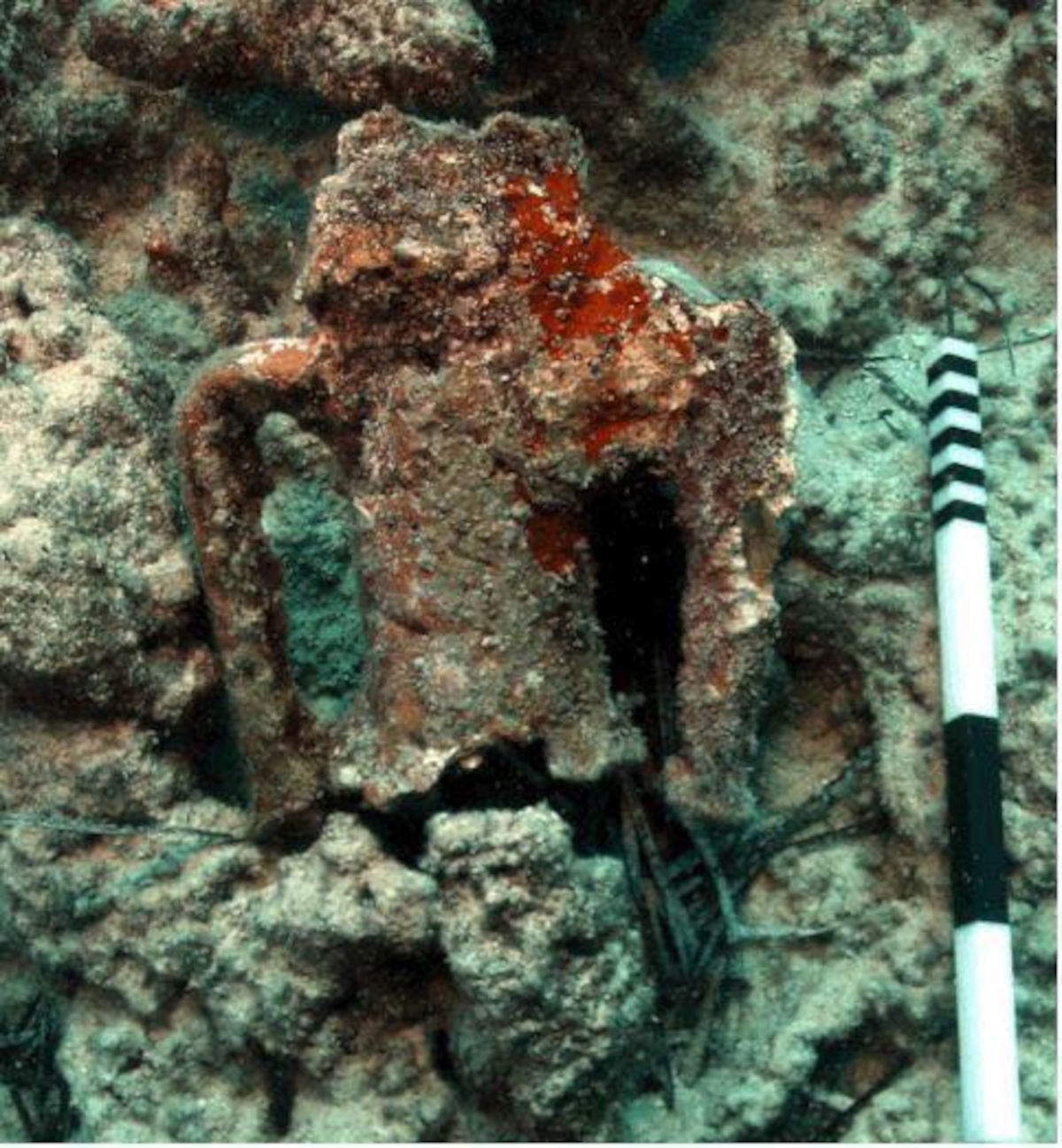
The research also led to the discovery of a tunnel connecting the Temple of Taposiris Magna to the Mediterranean Sea, to an area known as Salam 5, where divers found artifacts confirming the existence of ancient maritime activities. The discovery provides new information about the operation of the port and its economic and commercial functions, in close connection with the temple and the cultural context of the Ptolemaic era. Minister of Tourism and Antiquities Sherif Fathy stressed that these findings confirm the historical depth and maritime dimension of ancient Egypt, noting that its coasts were strategic nodes for trade and cultural exchange with the ancient world. The minister added that the government will continue to support research projects like this one, which highlight Egypt’s sunken treasures.
Mohamed Ismail Khaled, secretary general of the Supreme Council of Antiquities, on the other hand, highlighted the importance of the discovery of the submerged harbor, indicating that it represents an important scientific contribution to Egyptian marine archaeology, especially since ancient sources had not mentioned it. He added that the findings improve understanding of the economic and religious structures of the time and confirm Egypt’s position as a center of global maritime activity since antiquity.
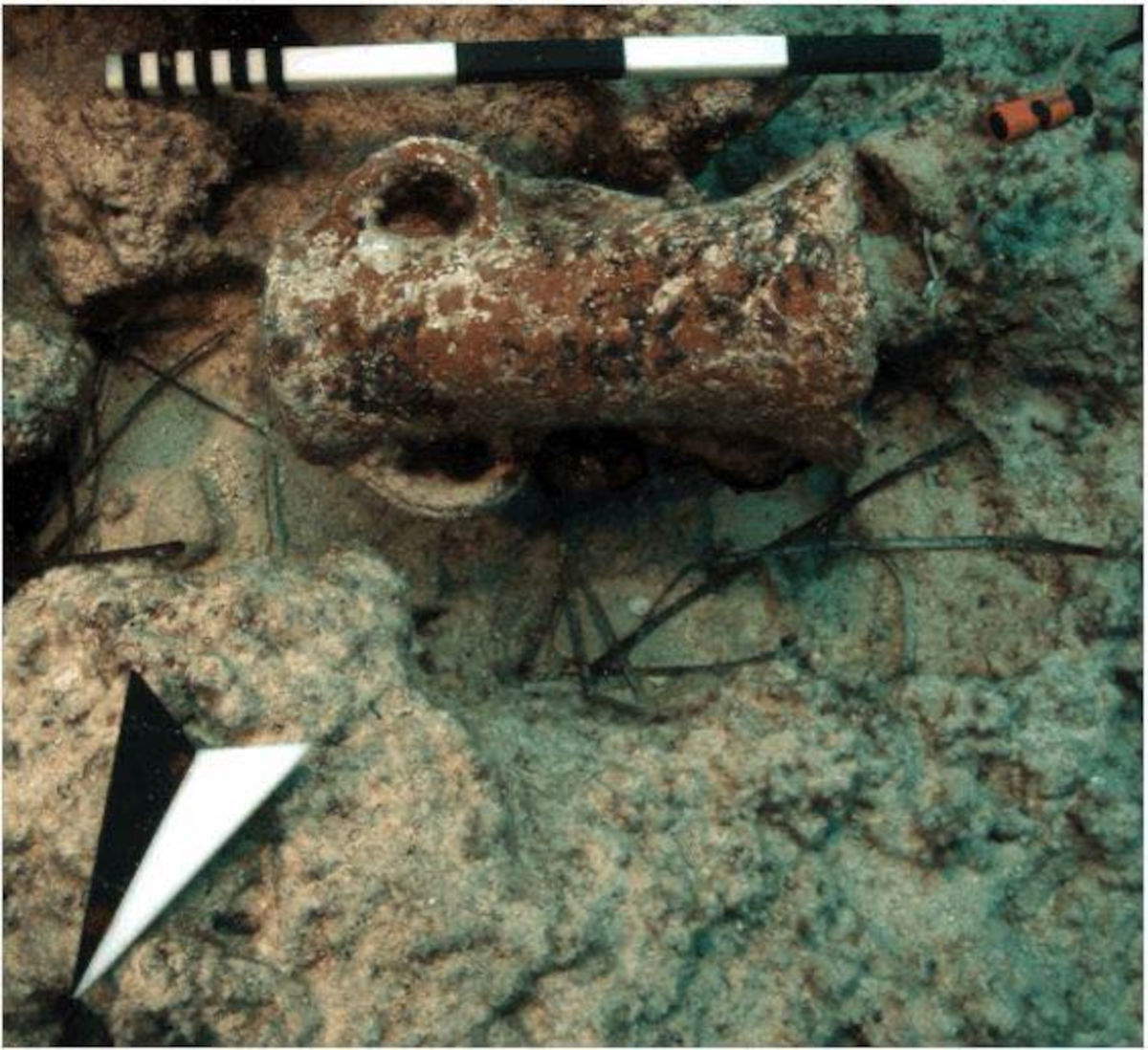
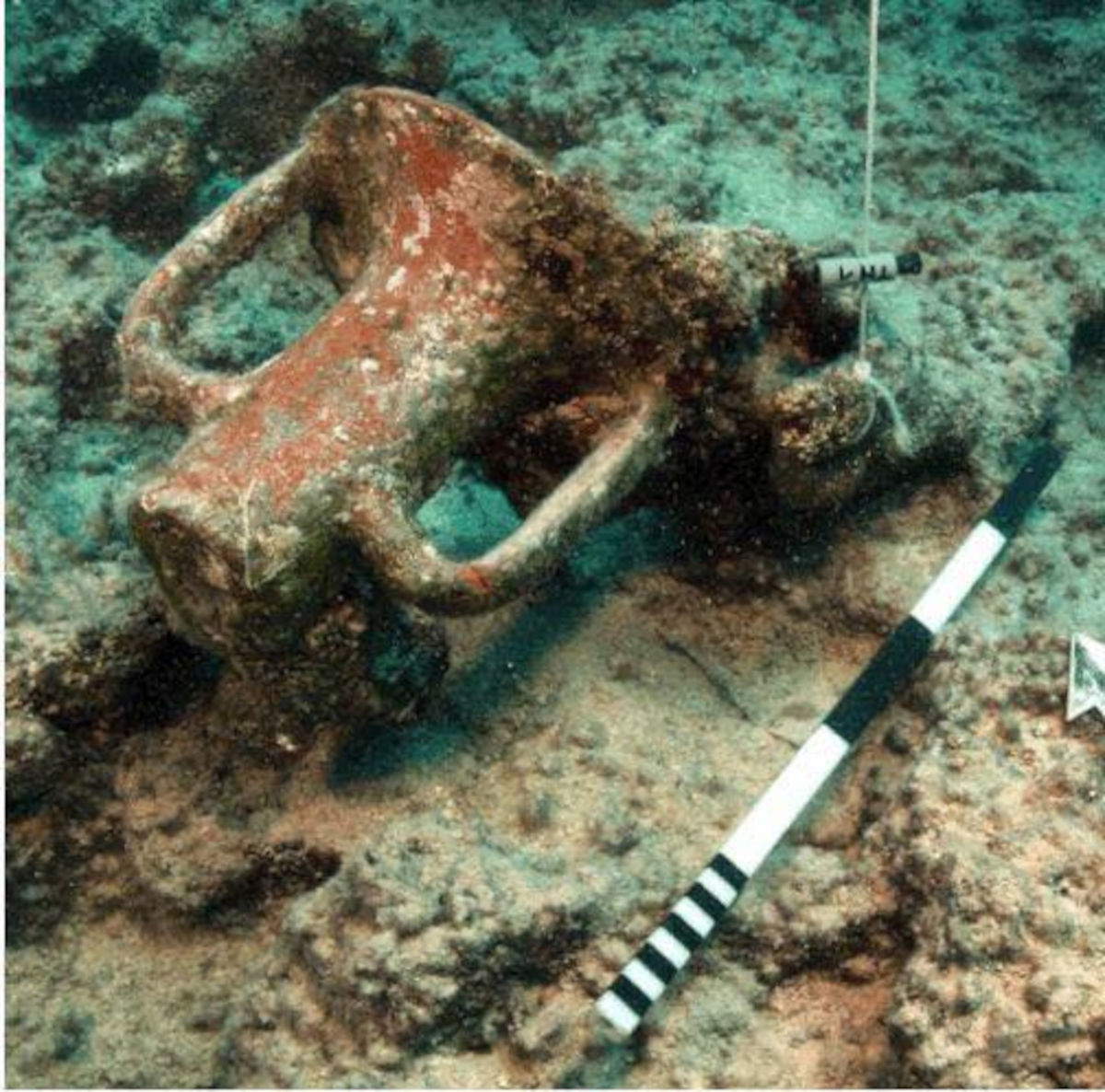
Finally, Kathleen Martinez said the discovery opens a new chapter in the study of the history of the Taposiris Magna Temple area and confirmed that the mission will continue its research to unveil more secrets and enrich the archaeological knowledge of the area.
In any case, this is not the mission’s first discovery: last year, key deposits were found under the south wall of the temple’s outer wall, containing a wide range of funerary and ritual artifacts, providing further details on the area’s activity in the late Ptolemaic period. Among the items unearthed were 337 coins, many bearing the effigy of Queen Cleopatra VII, along with ritual ceramic vessels, oil lamps, limestone containers for food and cosmetic tools, bronze statues, a scarab-shaped amulet bearing the inscription “Ra’s justice has shone,” and a bronze ring dedicated to the goddess Hathor.
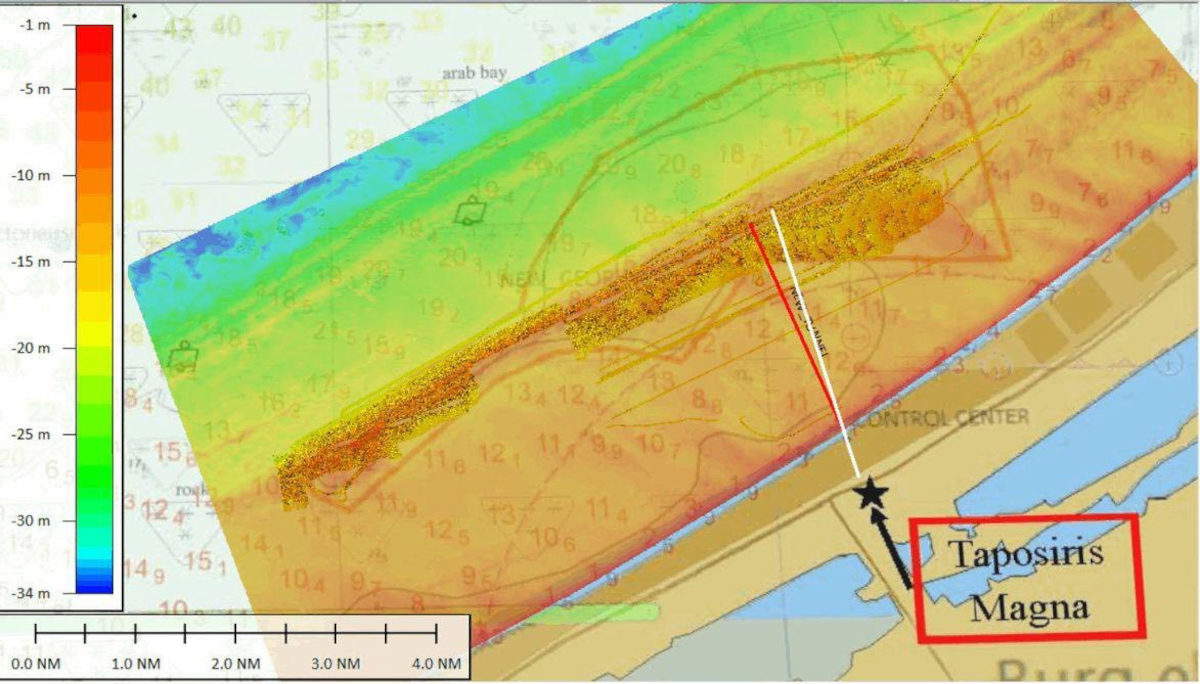
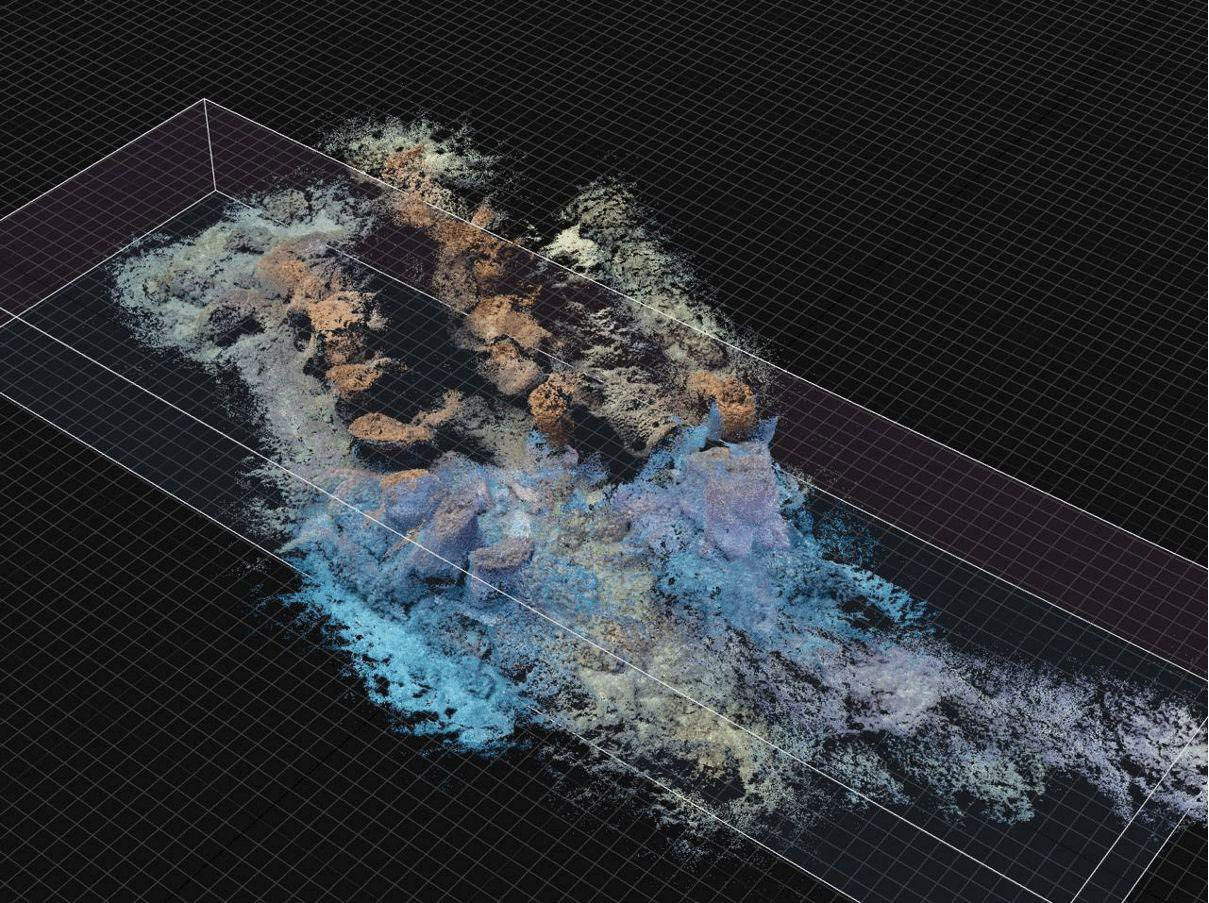
Records indicate that the temple structures date back to the 1st century B.C., while some elements come from the Greek period of the 4th century B.C., with destruction occurring between the 2nd century B.C. and the beginning of the Christian era. The information shows that the temple’s construction and development were closely linked to social, economic and religious changes in the area, while confirming the direct link between the temple and the surrounding maritime and economic activities.
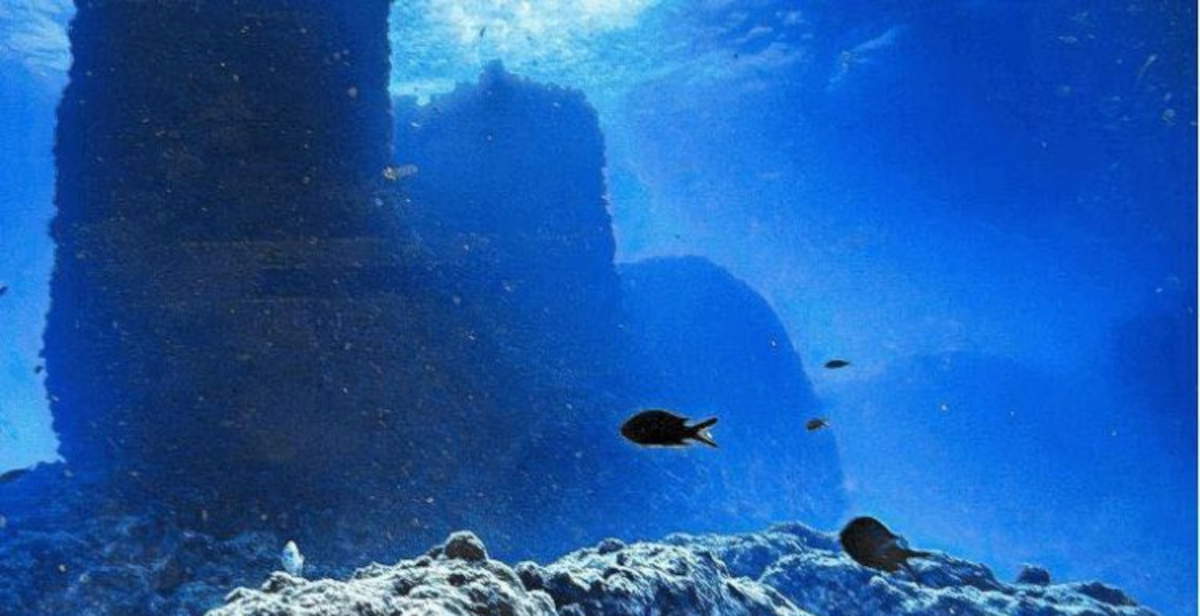 |
| Discovered a submerged harbor connected to the Temple of Taposiris Magna west of Alexandria |
Warning: the translation into English of the original Italian article was created using automatic tools. We undertake to review all articles, but we do not guarantee the total absence of inaccuracies in the translation due to the program. You can find the original by clicking on the ITA button. If you find any mistake,please contact us.